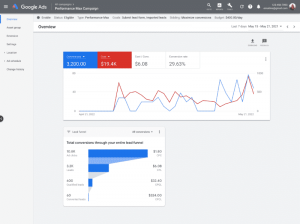Marketing leaders need to understand the brain’s role in minimizing threats and maximizing rewards to transform team dynamics.

Psychological safety is essential in today’s workplace, but many leaders struggle to achieve it. Workplaces with increased psychological safety saw a 27% reduction in turnover, per a Quantum Workplace survey. Yet, McKinsey’s 2021 survey found that only 26% of leaders create psychological safety for their teams. Yikes!
How can we, as marketing leaders, address this gap? One interesting approach is to look beyond the more conscious emotions and actions and instead explore the role of the brain in our perceptions of safety.
Understanding the brain’s role in psychological safety
Our brains constantly try to minimize threats and maximize rewards, a process essential for survival. We perceive situations as threats or rewards — there’s no middle ground for the part of our brain that activates the threat response.
We’re also much better at spotting threats than rewards. It’s much more advantageous to see a threat so we can protect ourselves, feel safe and ultimately, survive. While this evolutionary trait makes us adept at spotting threats, it can often lead to unnecessary stress as our brain will identify many perceived threats that unnecessarily activate our stress response.
When a threat is detected, the sympathetic nervous system triggers a stress response, preparing us for fight, flight, freeze or fawn. This impacts us physically and emotionally: our heart rate spikes, cortisol is released and our vision narrows, among other things. While beneficial in actual danger (or when being chased by a saber-tooth tiger), it’s less helpful in everyday work scenarios where the perceived threat may be a ding to our ego rather than our actual physical safety.
Recognizing these processes is crucial for marketing leaders aiming to create environments where teams feel safe and perform optimally. You can leverage this information to understand how your behaviors and those of others on your team contribute to this stress response and how to promote regulation so our brains and bodies feel safe. Because what happens when we feel safe? We build better relationships, we take risks, we innovate, we’re better at problem-solving, we’re happier; in other words, we thrive!
The SCARF model: A framework for understanding psychological safety
This gets much more complex when the social dynamics of collaborating, influencing and connecting in groups are added to the mix. In these scenarios, we all need psychological safety to thrive.
The SCARF model, developed by Dr. David Rock, is a way to understand this. It outlines five key domains that influence human social experiences and determine whether we feel safe. These domains can also activate the exact same threat and reward response in our brains. Ultimately, understanding them can provide useful insights into the perceptions of threats and rewards in workplace interactions.
Have you ever wondered why your employees recoil when they hear, “Can I give you some feedback?” or why their sense of justice kicks in when an employee is treated unfairly, or perhaps why that one employee is always so defensive when you ask a question?
The SCARF domains may provide you with some potential reasoning for that activation. These domains can also be viewed from a reward perspective, which can promote psychological safety for your team.
People feel safe in groups when their social needs are met. This lets them maximize rewards and minimize threats. Given that our brain considers these needs (the five domains) essential for safety and survival, as leaders, we need to be aware of how our behaviors can contribute to either this reward or threat response.
Each and every one of us has a SCARF order (Yes! There is an assessment you can take for this), where we may prioritize one domain over another when it comes to triggers — both positive and negative.
These domains are:
- Status.
- Certainty.
- Autonomy.
- Relatedness.
- Fairness.
Status
Status is about feeling respected and recognized. No one wants to feel less important or valuable than another. When people perceive a threat to their status, stress levels rise and productivity drops.
Certainty
Certainty involves having clarity about what’s coming and minimizing time spent in the unknown. This could mean understanding roles, responsibilities and expectations, as well as bigger-picture things like organizational direction and strategy.
Autonomy
Autonomy relates to the need for control over ourselves and our decisions. Have you ever had a micromanager? Well, if you prioritize autonomy, you probably know exactly what happens! Without autonomy, our creativity and motivation can plummet, and we often feel we’re out of control.
Relatedness
We are social beings, and feeling connected to others is essential. However, we must also feel safe, supported and related in this connection, which can be developed through trust and the alignment of goals, values and beliefs.
Fairness
Humans crave environments where fairness, justice, equality and equity are present. Where hard work and contribution are rewarded, and bad or immoral behavior is not tolerated. When we sense things are not fair, it damages morale and motivation.
Applying the SCARF model in leadership
Understanding and applying the SCARF model can significantly enhance your leadership approach. Each person prioritizes these five domains differently, so it’s important to understand your team and what matters most to them. It’s a balancing act!
Here are practical steps to apply the SCARF model.
- Promote recognition and respect: Ensure everyone feels valued and acknowledged for their contributions.
- Enhance clarity: Clearly define roles and expectations. Open communication helps reduce uncertainty.
- Empower autonomy: Allow your team to take ownership of their work. Encourage them to voice their ideas and find solutions.
- Foster connection: Build a strong sense of community. Encourage team bonding and honest communication.
- Ensure fairness: Treat everyone fairly and address any concerns about injustice promptly.
Creating optimal environments for marketing success
Psychological safety isn’t just a buzzword — it’s about understanding how our brains work and using that knowledge to make everyone feel safe and supported. When your marketing team feels secure in the areas they value, they’re more likely to perform at their best.
But don’t just take these actions; start to make the connections in your brain about how these actions deeply influence the natural process of promoting safety within our bodies and other bodies. This reflection should create an “aha” moment for you that allows you to step back and look at this objectively as a natural process built to help us survive but, more importantly, thrive.
So, next time you’re thinking about how to make your team feel safe and supported, remember the SCARF model. It’s not just about being nice — it’s about understanding the brain and creating the best possible environment that activates a reward response in these various domains for everyone to succeed.
The post Why psychological safety is the key to marketing team innovation appeared first on MarTech.
(7)









